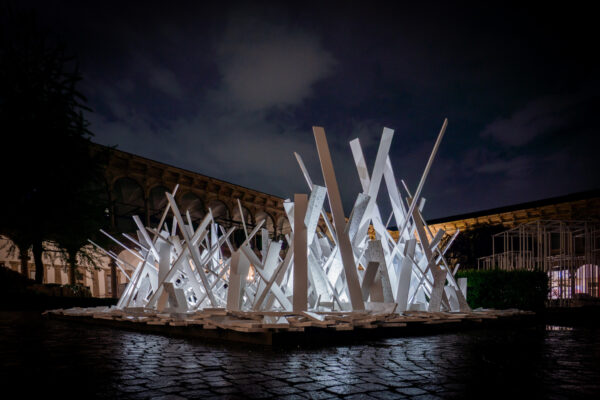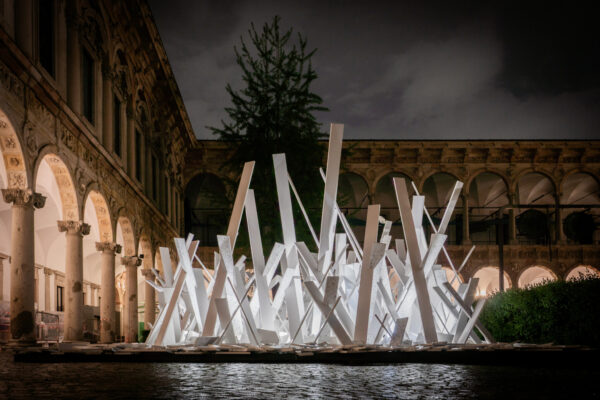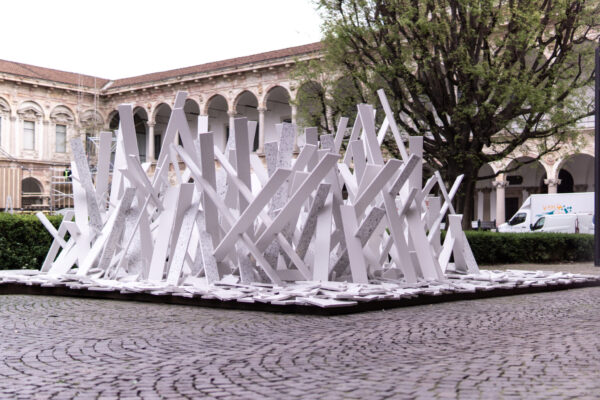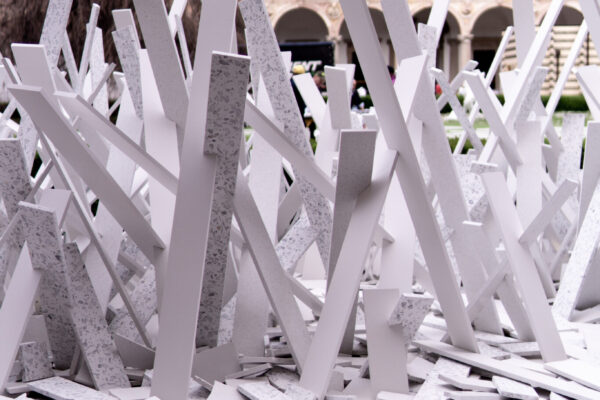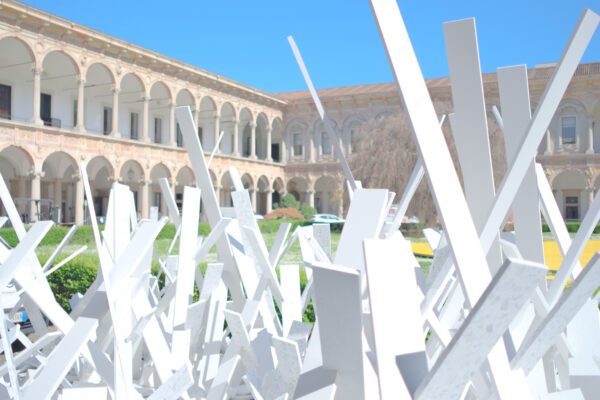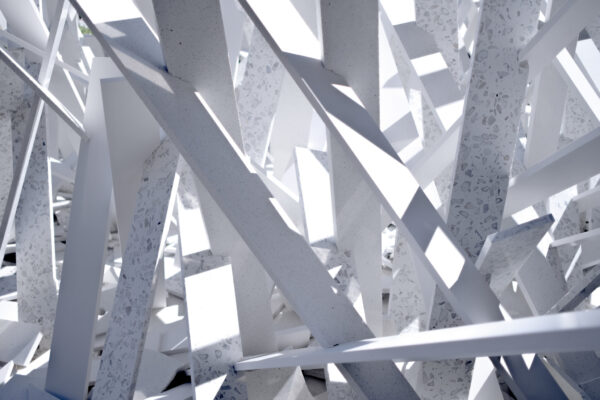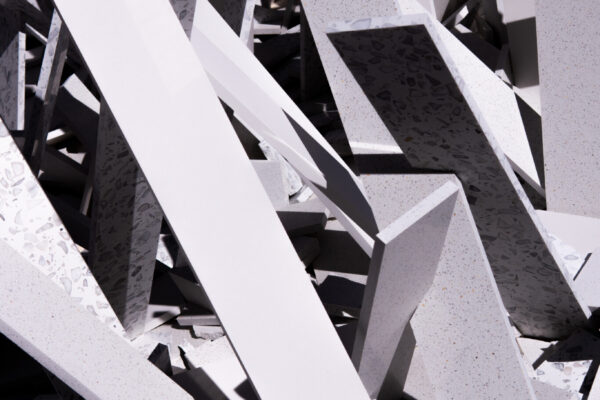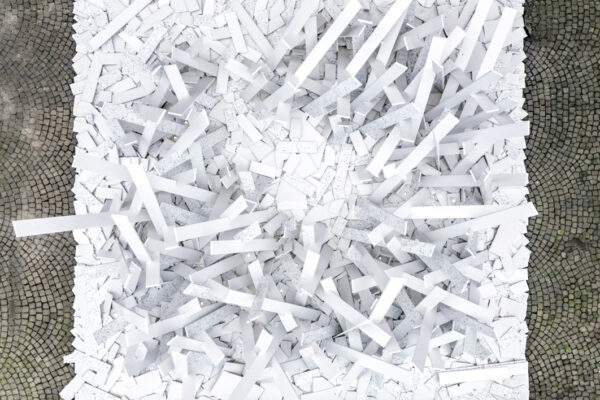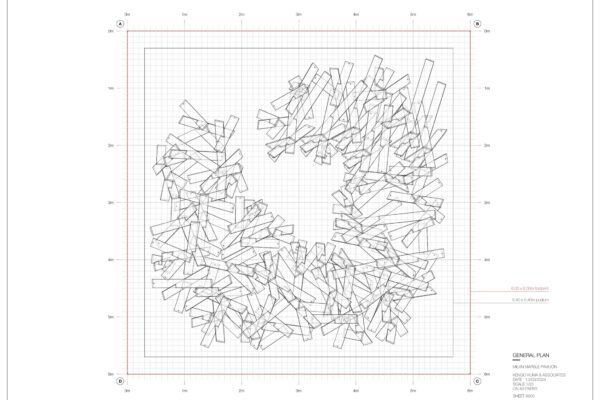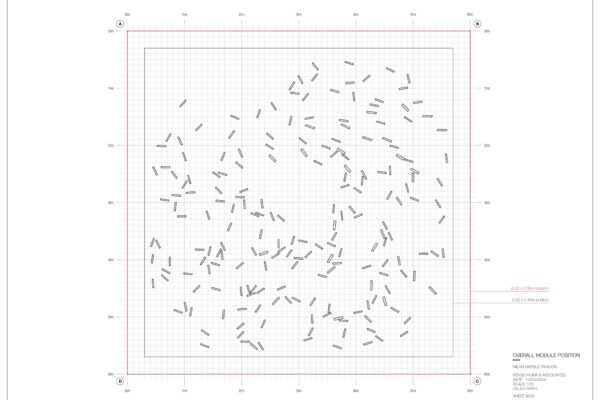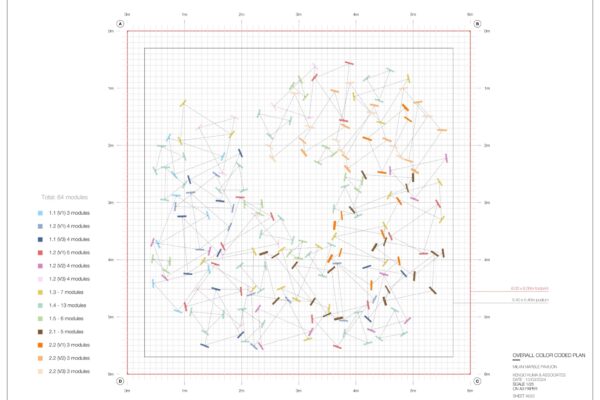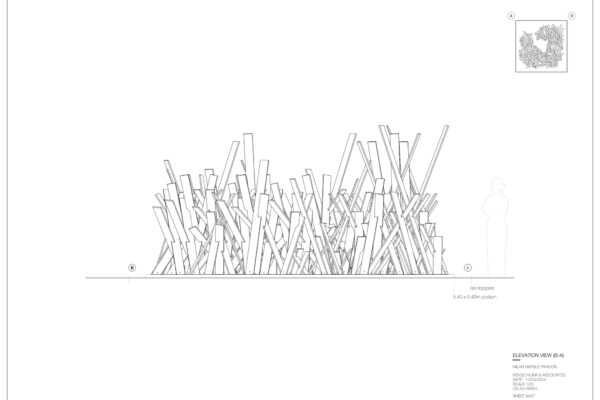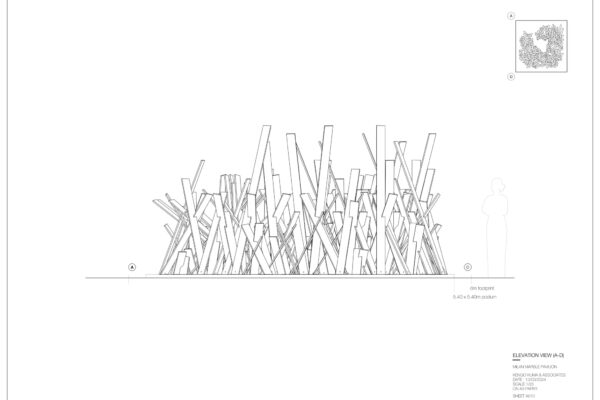Stone Grove
This project, Stone Grove, utilizes a unique stone composite material to create a formally natural and spatially wild installation. The project utilizes principles of contemporary Ikebana, which embraces the use of alternative materials to practice this storied art-form. This contemporary interpretation of Ikebana evinces that arrangements can be crafted anytime, anywhere, and in collaborative conversation with craftspeople. An immersive environment that embraces architectural scale manifests itself through the careful, intentional placement of each component based on this cultural compositional technique.
The installation consists of stone modules which are carefully joined to create individual, aesthetically and structurally balanced compositions. These are then arranged within a free field, wherein the maximum and minimum extensions possible with the material are expressed by the seemingly randomized lengths of each panel. As one moves around the project, the field oscillates between the gestural, the random, and the natural, constantly changing based on one’s perspective. From certain views, one can see all the way through the installation, while at other vantages the modules merge to create the feeling of a dense thicket.
The stone product, manufactured by Quarella, is a composite material composed of various-sized granules that are blended with natural pigments and resins to create a material known for its durability. A range of colors and textures can be specified to show the uniqueness of the aggregate that is blended to form the panels. The material promotes sustainability as it is composed of stone waste products that would typically be discarded during the quarry of conventional stone products. By collecting the waste and binding it together, a beautiful, strong material is produced that minimizes waste and the energy that would normally be consumed to use conventional stone products. The piling of stone shards that comprise the ground of the installation, merging with the upright modules, expresses this process. The discarded debris is shown assembled to create a new type of environment.
With this work, traditional Japanese concepts of spatial composition create a conversation between nature and artifice. The material is used to create an installation at architectural scale. What is normally discarded is instead purposed to form savage beauty.

